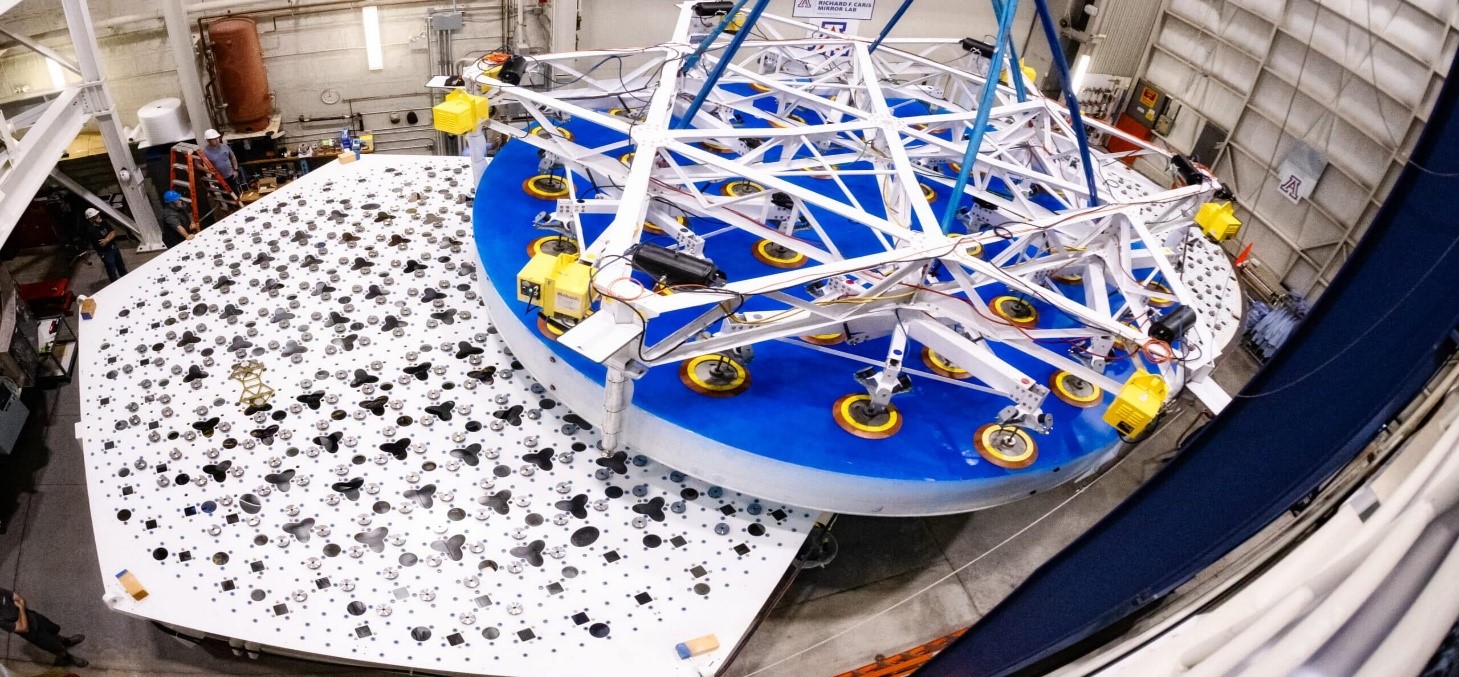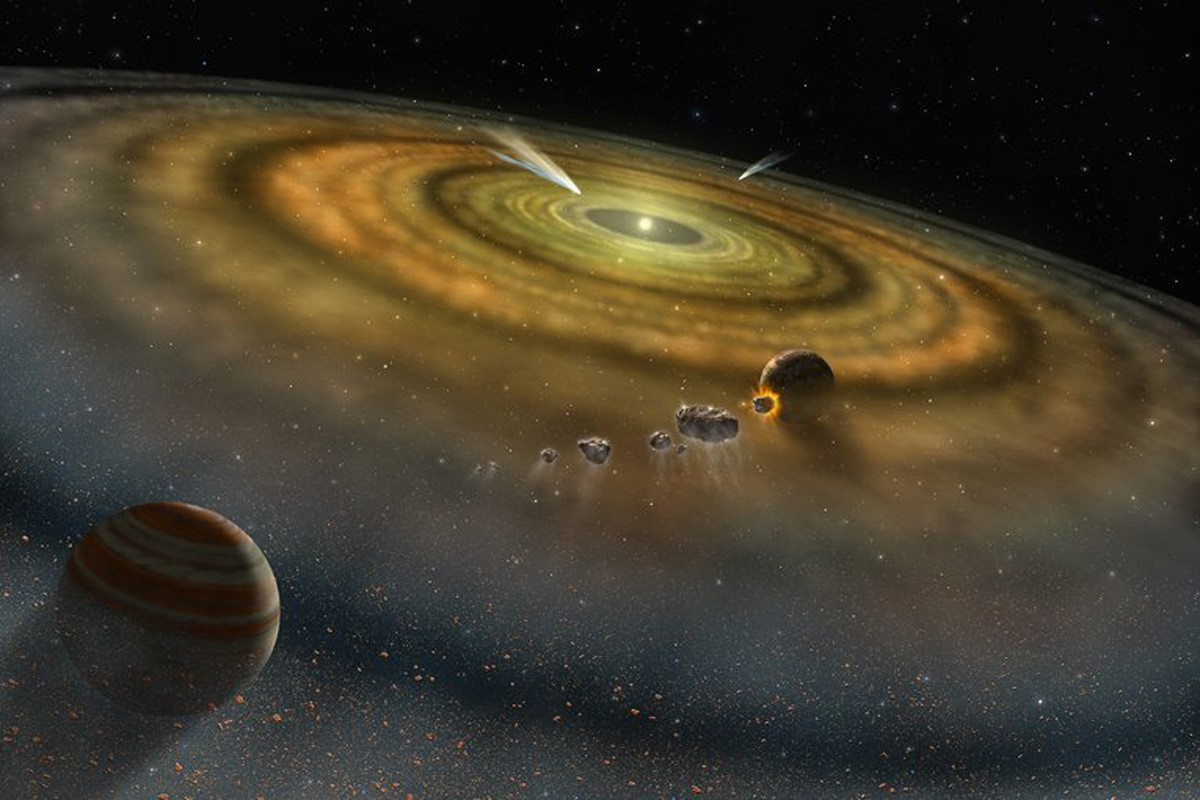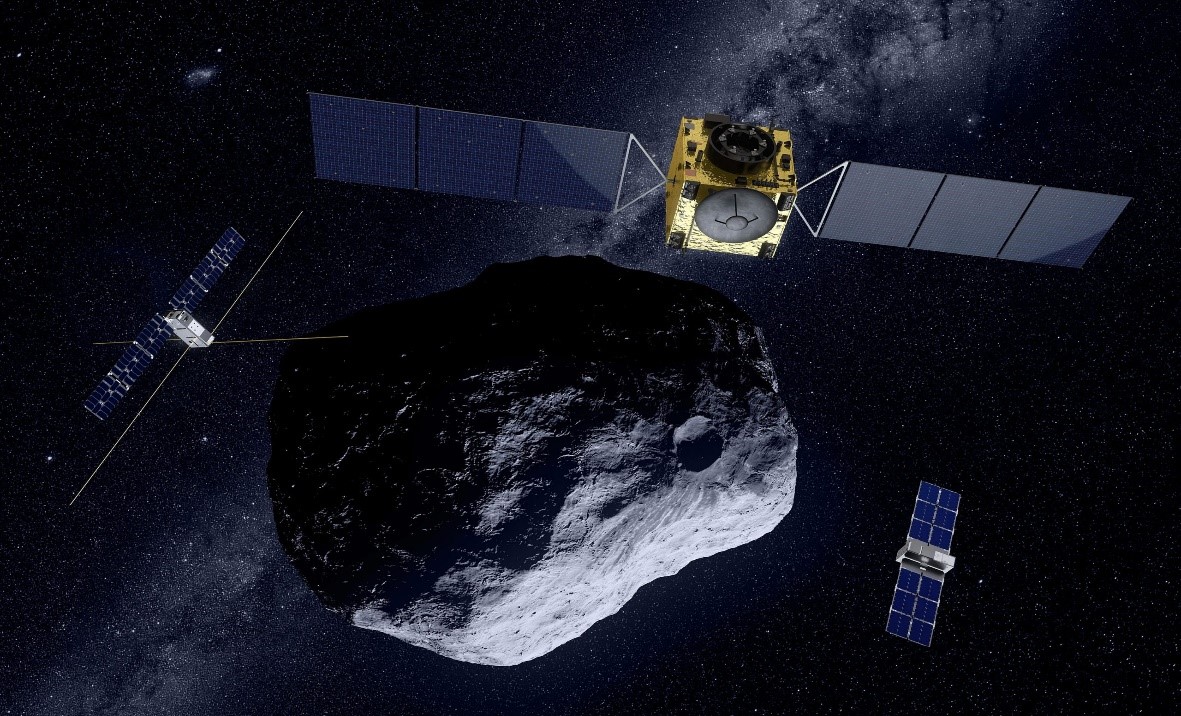Giant Leap for Astronomy: First Mirror Installed in Groundbreaking Support System for the Giant Magellan Telescope
The Giant Magellan Telescope has achieved a major milestone with the successful installation of one of its completed 8.4-meter primary mirrors into a prototype support system at the University of Arizona’s Richard F. Caris Mirror Lab. This advanced system—comparable in size to half a basketball court and containing three times as many parts as a typical car—is essential for the telescope’s optical precision and performance. The installation kicks off a six-month testing phase to confirm that the support system can maintain the required control over the mirror, marking a crucial step toward validating the telescope’s revolutionary light-collecting capabilities.

Figure 1. Giant Magellan Telescope Primary Mirror Support System Prototype Integration with Mirror. (Credit: Damien Jemison, Giant Magellan Telescope – GMTO Corporation)
Figure 1 shows Completed 8.4-meter-diameter primary mirror being transported and integrated with a support system prototype at the University of Arizona’s Richard F. Caris Mirror Lab [1].
The telescope’s massive 368-square-meter light-collecting surface is composed of seven of the largest optical mirrors ever made, arranged in a unique flower pattern [1]. Together, they will deliver unprecedented image resolution across the widest field of view in astronomical history—providing up to 200 times the power of today’s best telescopes [2]. Each mirror weighs 17 metric tons and is supported by a specialized pneumatic system, housed in a steel “cell,” that operates with nanometer precision. This system is designed to control the mirror’s position, stabilize its temperature, protect it from seismic activity, and counteract gravitational sag as the telescope moves, ensuring the optimal performance of the combined mirrors during scientific observations.
“This work is funded by a National Science Foundation award,” said Barbara Fischer, Primary Mirror Subsystem Manager for the Giant Magellan Telescope. “We began integrating the active support prototype system more than three years ago, and we first used a steel mirror mass simulator to demonstrate that our design was able to safely support and control the completed primary mirror segments. I am honored to work with an extraordinary team, and it is exciting to finally see a completed mirror segment integrated with the cell.” [3]
Collaboration with Texas A&M University was key to the integration process, particularly in cleaning, assembling, and testing the support actuators used in the mirror cell. While the actual installation of the mirror took just one day, the complex process began weeks earlier with the disassembly of the cell for transport. After a 20-mile move from the University of Arizona’s Tech Park to the Richard F. Caris Mirror Lab, the cell was reassembled for integration with the mirror, a process that took place in the early morning hours to minimize traffic disruptions [4].
“The Giant Magellan Telescope’s primary mirror active support system is the first of its kind,” said Trupti Ranka, Principal Opto-Mechanical Control Systems Engineer for the project. “The active support system contains an array of approximately 200 actuators and sensors to control the position and shape of the 17-metric tons, 8.4-meter mirror within a fraction of a micron. The control system allows a harmonious operation between the sensor data and actuators to achieve this precision.”
Following this successful installation, the mirror will undergo extensive testing at the Richard F. Caris Mirror Lab to ensure it maintains its shape and performance in varying operational conditions. Once testing concludes, the final design review for the production support systems will be conducted, leading to the start of production in 2027.
“This intricate system took years of designing, building, and testing by a team of specialized engineers and technicians,” said Tomas Krasuski, Principal Software and System Test Engineer for the Giant Magellan Telescope. “Every single component was thoroughly tested before integrating it into the system. Now that we’ve installed the mirror segment, we are excited to validate its performance. It has been a challenging yet rewarding process to get here.”
The milestone represents a significant step forward in the development of the Giant Magellan Telescope’s seven primary mirrors. Three mirrors are complete, while the remaining four are in various stages of polishing, with the seventh and final mirror cast in October 2023. This achievement follows the start of the 39-meter-tall telescope mount structure assembly in August 2024, marking another major advancement for the project.
“For the first time, a completed primary mirror segment has been integrated into its support system—this is a giant step in our journey toward first light,” said William Burgett, Project Manager for the Giant Magellan Telescope. “Once its performance is validated, we will begin manufacturing all seven mirror cells at Ingersoll Machine Tools, which will be one of the most exciting advancements to date.”
Currently 40% under construction across 36 U.S. states, the Giant Magellan Telescope is on track to be operational in Chile by the early 2030s.
Source: Giant Magellan telescope
References:
- https://www.eurekalert.org/news-releases/1061131
- https://phys.org/news/2024-10-giant-magellan-telescope-primary-mirror.html
- https://www.globenewswire.com/news-release/2024/10/15/2963275/0/en/Giant-Magellan-Telescope-Begins-Primary-Mirror-Support-System-Testing.html
- https://www.bakersfield.com/ap/news/giant-magellan-telescope-begins-primary-mirror-support-system-testing/article_078283be-5e2c-59e2-8995-6c6d55f43d4e.html
Cite this article:
Hana M (2024), Giant Leap for Astronomy: First Mirror Installed in Groundbreaking Support System for the Giant Magellan Telescope, AnaTechMaz, pp. 121















